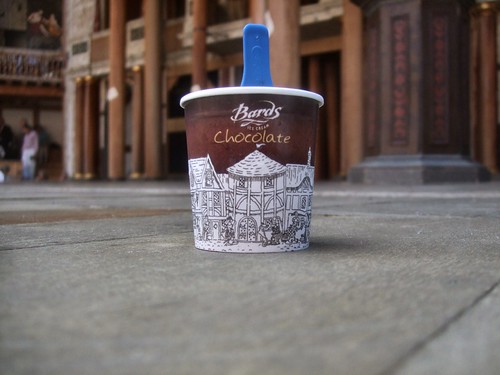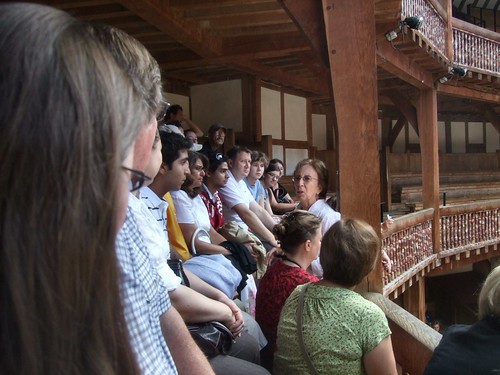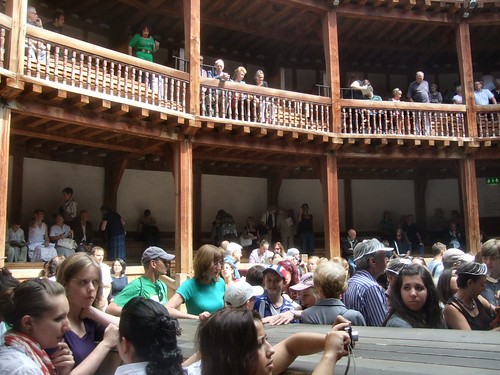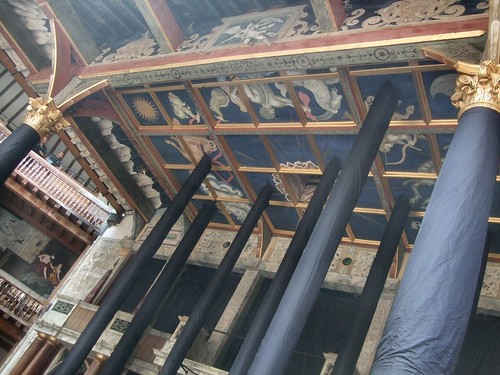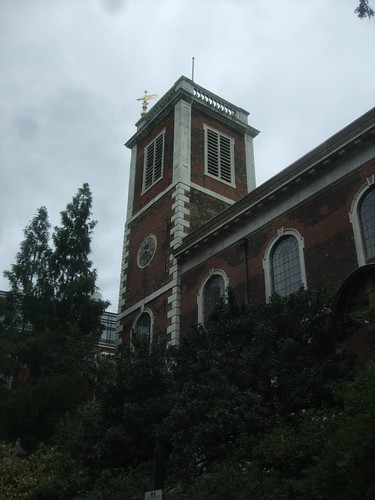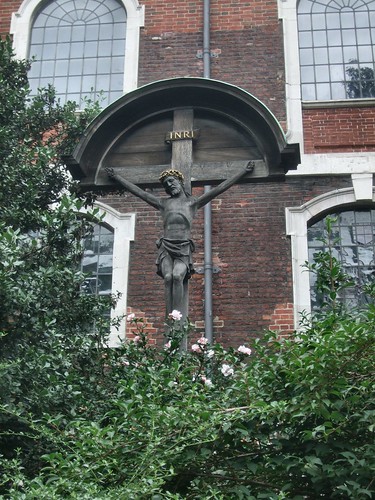
Hamlet played by Octavio.
Directed by Dana Marschz.
Without hopefully giving too much away (!) it’s important to note, right up front, since this (p)review is being published on a blog about Hamlet, that the provocatively titled Hamlet 2 has almost nothing to do with the play. The title of the film comes from the musical that Steve Coogan’s down at heels teacher is producing in order to save the drama department at the athletics driven high school in which he’s marooned following a failed acting career.
Though the story of the musical has the mysteriously resurrected young prince employing a time machine to visit key moments in the play to save Gertrude, Ophelia, Polonius and his father, do not watch the film expecting a sharp parody of Shakespeare’s story or themes in the tradition of Ten Things I Hate About You or even Get Over It, other than a very general mention of Hamlet oedipal complex.
That’s part of the joke; in casting about to create a production which demonstrates the power of theatre, rather than actually presenting one of the greatest works in the English language just as Michael Maloney’s similarly out of luck actor did during Ken Branagh’s In The Bleak Midwinter, Coogan’s hack egotistically writes his own version, an “offensive” travesty which also parachutes in Jesus, Einstein and a raft of other real life figures and pop culture references.
So while some of the resultant staging, in which Shakespeare’s scenes are lovingly augmented by a giant video screen, most remarkably with Hamlet Snr’s face looking down on his son, the dialogue is deliberately hammy, the film’s main trump card, the song and dance number Sexy Jesus Sing-Along has more to do with Grease and Jerry Springer: The Opera (and their ensuing condemnation by the religious right) than The Mousetrap.
With director Andrew Fleming’s film just about absolved of disingenuousness then, what enjoyment you dig up from this back stage high school musical probably depends on the extent to which you feel Steve Coogan is a comic genius. I have issues. I think he can be a very clever actor, and at his finest, in 24 Party People, A Cock and Bull Story, Marie Antoinette and the little seen Happy Endings, his work can be outrageous but poignant. Sadly, he also has a tendency, when he’s the focus of attention, to push himself too far, resorting to the worst variety of gormless mugging, as in The Parole Officer or Around the World in 80 Days.
During Hamlet 2, he’s in almost every scene, and Fleming, deep in the genius camp, appears to have given him a certain latitude to improvise which leads some scene to donder on beyond their natural end as Coogan attempts to ring out every drop of the “comic potential”. When Fleming (who in the 1990s brought us the righteous run of Threesome, The Craft and Dick) should be playing up the zanier aspects of the film in preparation for his finale, he’s too busy allowing Coogan to shout, gurn and toss his hair about as though it’s a punch line. That has the effect of stagnating the rest of the film and at worst Coogan becomes the boring one at the party who hogs the conversation but doesn’t realise he’s ruining everyone’s night.
Elizabeth Shue cameos, playing herself, having given up acting for the nursing profession, but much of her contribution is reduced to reacting to Coogan’s hero worship and shouting out of her back catalogue. The mighty Catherine Keener is wasted in the role of his wife, throwing out some good barbs, but generally looking like she knows she’s in a dud. David Arquette plays their “boring” lodger whose turn is to mumble obvious observations about the situation but otherwise has nothing to do. And at the moments when they’re at their funniest, Fleming cuts away to whatever bit of business Coogan is up to. Only Amy Poehler is given space to work as a ballsy civil rights lawyer who doesn’t care about the quality of the production.
Hamlet 2 barely manages to resuscitate when dealing with the teenagers who populate the drama club. There’s some interesting subtext in relation to our perception of the kid’s background, and their ability to turn in a good performance on stage despite the material. At a guess (though the deleted scenes on the dvd don’t reflect this) I’d suggest that there are a couple of sub-plots within this group which are still sitting in the editing software. The director has clearly decided that the film is about Coogan, Coogan and more Coogan, and I take no pleasure in saying this, especially since the film company have been good enough to supply me with a preview copy, on this occasion his timing off, off and even further off.
I will add this. I laughed four times, proper belly laughs, at very good jokes, which it would be a shame to spoil, especially since if you’re in the right mood, Hamlet 2 might just work, particularly in the finale where the population of the town turn up to simultaneously gasp and applaud the final production. The film is co-written by South Park's Pam Brady and these closing dance numbers clearly share some DNA with the productions in the film version of that series (Bigger Longer & Uncut).
But that’s not enough for me. As the first ambassador says in Hamlet 1, “The sight is dismal”. And it really is.
Hamlet 2 was released on DVD on the 7th September 2009.


